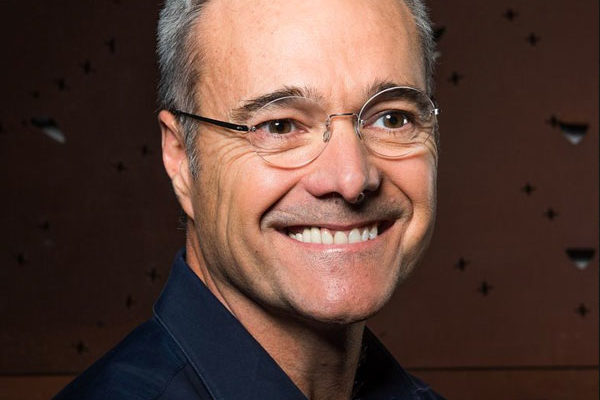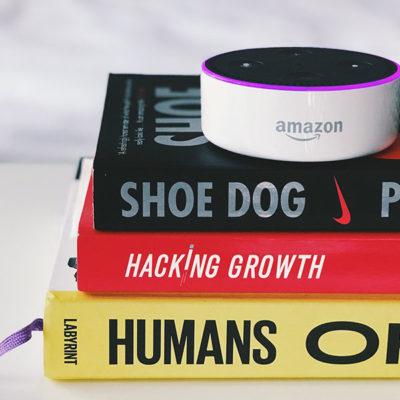Thinking
Five Questions with Neil Lindsay
Vice-President Prime & Marketing, Amazon

Neil Lindsay
Vice President of Prime and Marketing, Amazon
How has Amazon adapted to the challenges of 2020?
We’ve all had many challenges in 2020 as companies and as individuals. Clearly our number one priority has been making sure our environment is safe for our employees. We’ve been aiming to get people what they need, in terms of essential items and groceries, and getting it to them reliably and fast. That’s always been a big thing for us. It’s an important part of who we are, what we do every day and what we invent to ensure that we can deliver the things people need reliably and fast.
It’s been challenging this year, but we’ve adjusted. We’ve adapted to that challenge to get customers the things they need most, which have been different to what they’ve traditionally needed.
The past six months have been hard in many ways. Particularly, obviously, for the people who’ve had to deal with the pandemic personally, either with their families or others getting sick; it’s been a terrible period for many, many people.
But from a business perspective and for us as Amazon, it’s been about adjusting to the working-from-home environment but, even more importantly, adapting to make sure our employees are safe, whether they’re working in offices, working out of distribution centers, driving trucks or flying planes – getting our environment to be safe as possible so that we can deliver to customers those essential services that they need.

How does Amazon relate to its customers? Has that changed?
The relationship between Amazon and its customers is something that we earn every single day. We’re grateful for the trust customers put in us, but we often say: “it’s always Day One.” And the reason we do that is that we recognize that customers can get dissatisfied quickly – yesterday’s invention becomes today’s new normal, and we have to get up tomorrow and invent on behalf of customers to make their lives a little easier and a little better and a little bit more fun, in order to earn their trust every single day.
When I think about the relationship we have with customers, I often think about stories I’ve heard from some customers when they say they love Amazon – the deepest relationship typically comes with a story about how we’ve enabled them to have a moment of triumph. Like when customers tell us that we were able to deliver that thing they needed just on time that made them a hero in the eyes of their family, their colleagues or friends, whether it be the perfect gift or something that solves a problem. What I get most excited about is that at our best, we’re enabling the triumph of the everyday hero. And that’s the core of what we try to do and why we’re inventing every day.


Has COVID-19 helped or hampered the brand’s ability to build meaningful emotional connections with your customers?
Covid has maybe changed some of the very specific things customers need now, but it hasn’t changed the fundamental basis of our relationship with customers. Our job is to offer selection, value and convenience to make our customers’ lives a little bit easier, a little bit better and a bit more fun. So the relationship is first and foremost about meeting our promises, and our commitments to our customers.
But beyond that, I also think our customer relationship is that of a “small b” brand. The relationship they have with our brand is an output of the customer experience. A “capital B” Brand might have a manifesto that defines the products they build and so forth. But for us we’re “capital C” – Customer obsessed, which puts the focus on the things we need to invent.
How would you say Amazon is having a positive impact on the world?
Our job at Amazon is first and foremost to make sure that we deliver on our promises to our customers with the products, services, and content we deliver. But we have a responsibility over and above just serving our customers. And that is to find the best future we can together with our customers, with our employees, with the communities we operate in, and frankly, in the world at large, which is why we have efforts like the Climate Pledge. It’s why we’re determined by 2040 to reach net carbon neutrality. And that’s going to take a lot of invention on our part. It’s why we invest in things like Career Choice to help our employees grow and find careers, whether they’re in Amazon or even outside of Amazon. It’s why we invest in employees, in programs, and in communities – like Mary’s Place here in Seattle, where we’ve provided space to help deal with homelessness, particularly for single-parent families. Our responsibility is to leave this place a lot better than we found it every single day. And we’re committed and work hard to do that in many, many ways.
What do you see in the near future for Amazon?
Beyond 2020, I’m hoping clearly for some level of back to normal, but I know the new normal is going to be different to the old normal. There’s a lot of ways we’ve all had to adjust. I’m looking forward to connecting with friends in person again, rather than just over video conferencing. And frankly, we all need a few hugs. It would be good to be close enough to do so.
There’s lots of exciting things ahead of us clearly as a business. And we all need to be optimistic about the future – optimism believes in better; optimism with grit makes things better. The key for the future is for us to be optimistic and to work hard at making things better.
What is your future vision for brands in 2021 and beyond?
First and foremost, brands are about making sure they deliver on their promise. We are in business to serve our customers and to serve them in ways over and above what they expect. That’s the number one job, but brands obviously have a bigger obligation. Brands are like people; we all have a story to tell, we have a personality. We all have things that we stand for.
And it’s becoming increasingly important that brands need to be clear about who they are and what they stand for. Our responsibility as marketers is to amplify the truth about why we do what we do and how we do it, and to make sure that people understand our motives. Other brands have things that they stand for as well. People expect brands to make a difference. And I’m excited that we’re able to.
